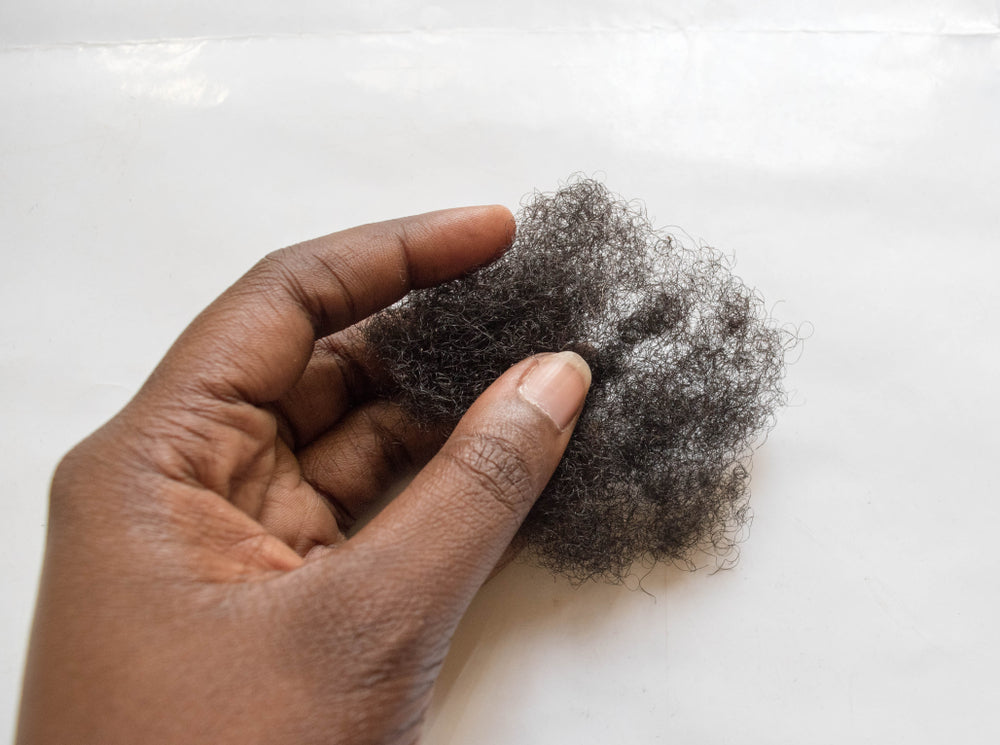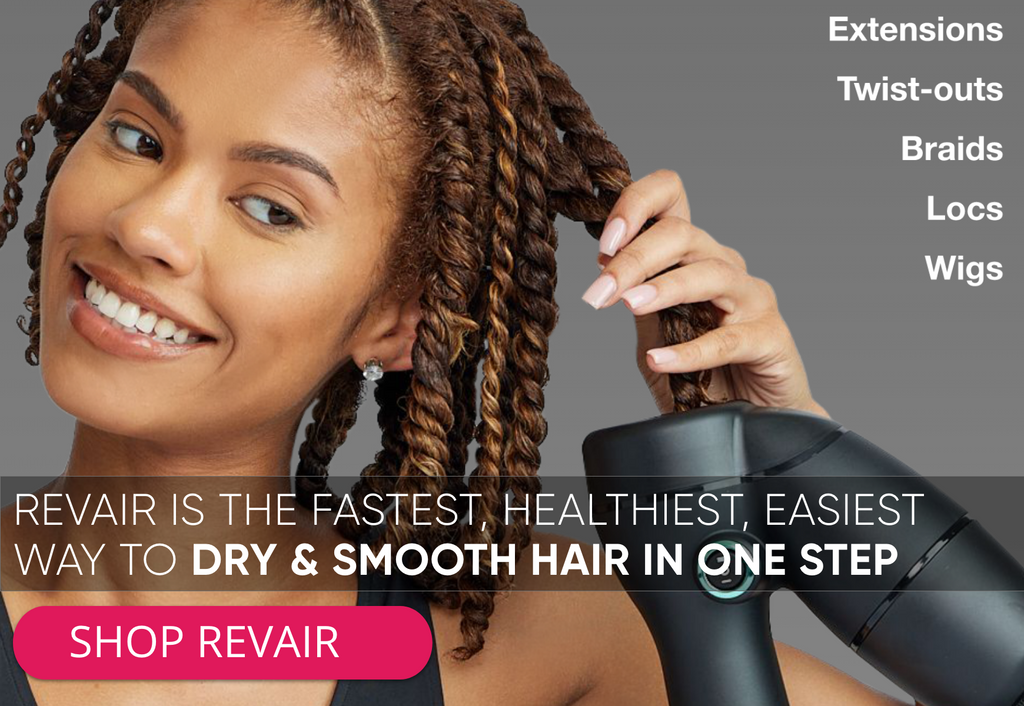
Hair Shedding 101

"How am I not bald yet??" If you have curly hair, chances are you've exclaimed this question out loud to your comb, bathroom floor, or shower drain. Hair shedding is a very common phenomenon, especially for thicker curl patterns. However, seeing a few strands caught in your brush can be alarming.
Join us for another curly hair guide on everything you need to know about hair shedding.
Hair Shedding or Hair Loss? What's the Difference and What's Going On With Your Curls?
It may surprise you to learn that hair shedding and hair loss are not one and the same. Hair shedding is a completely natural occurrence. Shedding may happen seasonally, after showering, with age and hormonal changes, or simply as a part of your hair's normal routine. Shedding occurs during the exogen phase of hair growth as your hair sheds old follicles and begins a new growth cycle. It is the shortest period of the hair growth cycle, typically lasting 2-4 days. According to the American Academy of Dermatology, we shed an average of approximately 50-100 hairs per day. Curly hair is most prone to shedding when compared to other hair types. Remember; we have 100,000 hair follicles on our heads! Compared to that staggering number, one hundred hairs per day is not nearly as much as it sounds.

Hair loss on the other hand is caused by non-scarring alopecia or anagen effluvium. This refers to inflammation or toxicity which causes the hair shaft to fracture. In simple terms, hair loss means something is preventing your natural hair from growing and causing weakness or breakage to the hair shaft. External factors are often to blame for hair loss whereas shedding is a natural part of growth. A good rule of thumb when trying to discern whether you're experiencing hair shedding or hair loss is that shedding is temporary, while hair loss is long-term.
If you're losing more hair than usual, it's time to start looking into possible causes of hair loss including heat treatment, products, and overall hair health. However, if you're simply experiencing a shedding phase, don't panic. Shedding is usually nothing to worry about when it comes to caring for curly hair. Once the cycle has passed, you'll enjoy luxurious new hair growth and shiny, vibrant locks. Hair shedding is proof that your follicles are doing their job!

When Is Hair Shedding Most Frequent?
The frequency of hair shedding varies from person to person, but there are a few universal factors able to predict when your hair might start to experience more loss. Seasonality is a big factor in hair shedding. This is often observed during transitional periods such as summer to fall and winter to spring. Hormones are another factor in hair shedding. Our hormones go through regular cycles as well as more significant changes as we age. Pay attention to your body and you'll learn to identify corresponding cues that may offer a heads-up as to when you can expect hair shedding to occur.
Other factors include environmental elements such as heat and wind in addition to stress, a new hairstyle or protective style, a new hair treatment, or switching to a different hair product. Of course, some hair shedding is purely hereditary. This does not mean you have "bad hair." Just the opposite, hair that has a longer or more frequent shedding season is often extremely healthy, shinier, and more radiant due to rapid hair replacement, and faster growth. Love your locks and don't stress a few strands on the floor. Your curls are simply making room for a silky, voluminous luxury style.

Too Much Shedding Leads to Too Little Hair: Preventing Excessive Hair Shedding
While a little hair in the brush is nothing to worry about, excessive hair shedding can be a problem for curly hair. Hair shedding can be triggered by stress or poor hair health. This can lead to a gradual thinning of the hair, often at the top of the hair. Your hair may begin to look thin, dull, and limp as a result of excessive hair shedding.
Stress
Stress is a primary trigger for excessive hair shedding. The cortisol hormone released when we're under pressure triggers hair loss during the anagen phase of the hair cycle. This is the key growth phase in your hair's routine so losing a lot of hair can impede growth. To manage stress-related hair loss in curly hair, it is often helpful to get connected with your body. Identify any triggers within your environment and practice mindfulness techniques such as deep breathing. Even a change as simple as a 10-15 minute guided sleep meditation before bed or a hot oil massage to relax your scalp can make all the difference in preventing excessive hair shedding.
Lack of Vitamins and Nutrients
Like the rest of our body, our hair needs the proper fuel to maintain a healthy balance. Excessive hair shedding can be a sign of a nutrient deficiency. Take a moment to look over your hair care products. Are you getting enough oils, butter, and vitamins? Are your products free of drying agents like parabens and sulfates?
Next, supplement your hair to enrich each strand. Biotin is one of the best strengthening compounds for curly hair. This fantastic B vitamin has been shown to speed up hair growth by stimulating keratin protein production at the follicle level. Experts have found that not only does biotin make your hair stronger, but B7 can also make your hair more resistant to falling out. Other essential hair nutrients include vitamins A and C along with iron and zinc to promote healthy hair growth.
Clarifying and Conditioning
A good curly hair routine is essential for balancing hair shedding. Clarifying your hair and scalp reduces build-up. In turn, this reduces inflammation which causes excessive shedding and can lead to hair loss if not attended to. Choose a high-quality clarifying shampoo to work into your home hair care routine at least once a month.
You'll want to follow this with a deep conditioning treatment on every wash day. The best ingredients to look for in conditioners for curly hair were ranked in Self and include the following: hyaluronic acid, hydrolyzed vegetable protein, vitamins, jojoba oil, rosemary oil, caffeine, shea butter, and argan oil. If you're in peak hair shedding season, pamper your hair with extra hydration and nourishment. A hair mask once a week is a great way to fortify your hair.
Don't Skip Detangling
One of the worst mistakes you can make with a home hair care routine for curly hair is skipping the detangling step. Without detangling your locks so brushes and styling tools can glide smoothly through, you're going to encounter a lot of snares and excess shedding.
Take a moment to detangle your hair prior to hopping in the shower. Work through more stubborn knots with a wet brush after conditioning and separate difficult snares with your fingers to gently detangle. Avoid pulling and tugging on your hair during this stage of the journey. If your hair is especially tangle-prone, you might consider investing in a silk pillowcase with anti-static benefits to keep your hair soft and manageable in the morning. Those who do use silk pillowcases report less overnight hair shedding.
Heat Treatments
Heat is one of the leading causes of excessive hair shedding. High heat treatments such as blow drying or straightening disrupt the keratin bonds within each strand. Hair growth often slows as a result and breakage is a common occurrence. This is one reason why so many beauty gurus are turning to low-heat devices when it comes to caring for their curls. Rather than frying your lovely locks, ditch the blow dryer instead! Once you discover the quick, easy, and damage-free beauty of RevAir, you'll never want to go back to styling your hair the old fashion way. Reducing heat treatment is an excellent technique for minimizing hair shedding. Better still, our reverse air drying device allows you to stretch your hair while drying. This prevents excess breakage during the styling stage and keeps your curls flawless.
So the next time you find a little hair in the brush, don't panic. You aren't going bald. In fact, your hair is preparing for new growth!
Hair shedding is a common phenomenon in the curly hair community. We're here to shed light on the issue, for lack of a better term. Hair shedding is a completely normal restorative process. When accompanied by proper home hair care, your curls will bounce back more radiantly than ever.
If your hair has been shedding a bit more frequently, let us help! Our team can recommend the right way to care for your curls in every growth phase. Happy styling!















